Published Oct 11, 2021
10 Fun Facts About Star Trek V: The Final Frontier
"What does God need with a starship?"
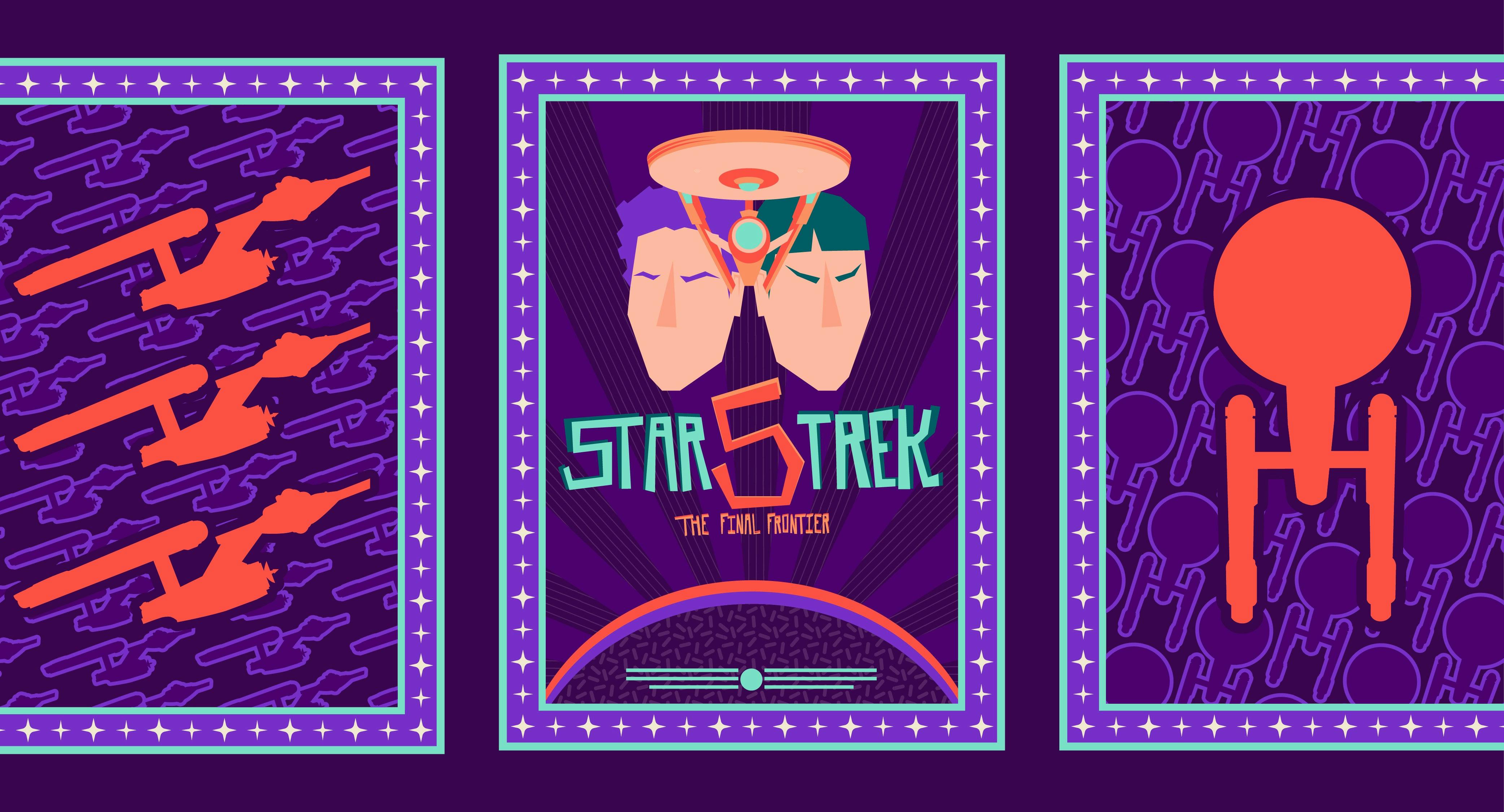
StarTrek.com
Let’s just say it: Star Trek V is not always considered one of Trek’s finest moments by some fans. Audiences were shocked to learn that Spock had a brother they’d never heard of — there would be similar indignance at the arrival of Michael Burnham 28 years later — and underwhelmed by the visual effects as well as the overall story. But despite its flaws, the movie has a lot of highly entertaining moments as well as its own special charm. What Kirk-Spock-McCoy fan can resist those campfire scenes? And what does God need with a starship?
To celebrate the film’s 32nd anniversary, here are some fun facts you may not be aware of.
The original story was going to be about meeting God… for real

StarTrek.com
William Shatner says he got the inspiration for the movie after watching people like Jimmy Swaggart and Jim and Tammy Faye Bakker on TV. This was during the heyday of televised evangelism, when people were forking over all of their money to already-rich TV celebs claiming to have a direct connection to God. In his original plan for the movie, detailed by his daughter Lisabeth in her book Captain's Log: William Shatner's Personal Account of the Making of Star Trek V: The Final Frontier, the Enterprise crew was actually going to find God, only to have him turn out to be the Devil. There was even a scene where McCoy was dragged to Hell by furies, resulting in Kirk and Spock making like Orpheus to get him back.
Sybok wasn’t originally Spock’s brother

StarTrek.com
As other elements of the story shifted, so did its central antagonist. Originally named Zar, he was going to be a zealot similar to the Ayatollah Khomeini, who had become the supreme religious leader of the Islamic Republic of Iran in 1979. As the story shifted, the character changed along with it, until he was less like the Ayatollah and more like professor-turned-LSD-advocate Timothy Leary.
The story called for Spock and the Enterprise crew to temporarily betray Kirk and follow Sybok. The creative team was struggling to find a way to make that seem plausible, and then producer Harve Bennett “lit up” (says Shatner in his Movie Memories book) and shouted that he had the solution: Sybok would be Spock’s brother. Shatner hated the idea but was convinced to let Bennett map out the story, and he ended up liking it.
Of course, when Leonard Nimoy and DeForest Kelley heard that their characters were supposed to betray their captain, they each put a foot down; they knew their characters better than anyone, and they would never turn on Jim Kirk. They insisted that the story be changed, and ultimately, it was.
There were supposed to be all these Rock Men…

StarTrek.com
As William Shatner and writer David Loughery describe it, the movie’s original ending was huge in scope and highly cinematic, but every time the budget got whittled down, another key element disappeared; they chipped away at the ending until there was very little left of it.
The script called for the Furies to transform into Rock Men who’d explode from the dust, breathing fire and granite. It would feel like Dante’s Inferno! The plan was to have ten Rock Men, until they learned the cost would be $350,000 each—which meant three and a half million dollars just for the ending. The studio told Shatner he could afford one Rock Man, so he came up with a plan for exactly how he’d film it to make his one Rock Man look like ten. Small problem: The costume wouldn’t be ready until the day before filming. When they finally saw the stuntman in the suit for the first time, it was nothing like Shatner had pictured; he said it just looked like a guy with pieces of slate stuck to him. There also wasn’t a way for the costume to breathe fire without harming the stuntman inside. They did a camera test (which is a well worth watching special feature on the Blu-ray), then dumped the whole idea.
There were familiar faces from both Trek’s past and its future
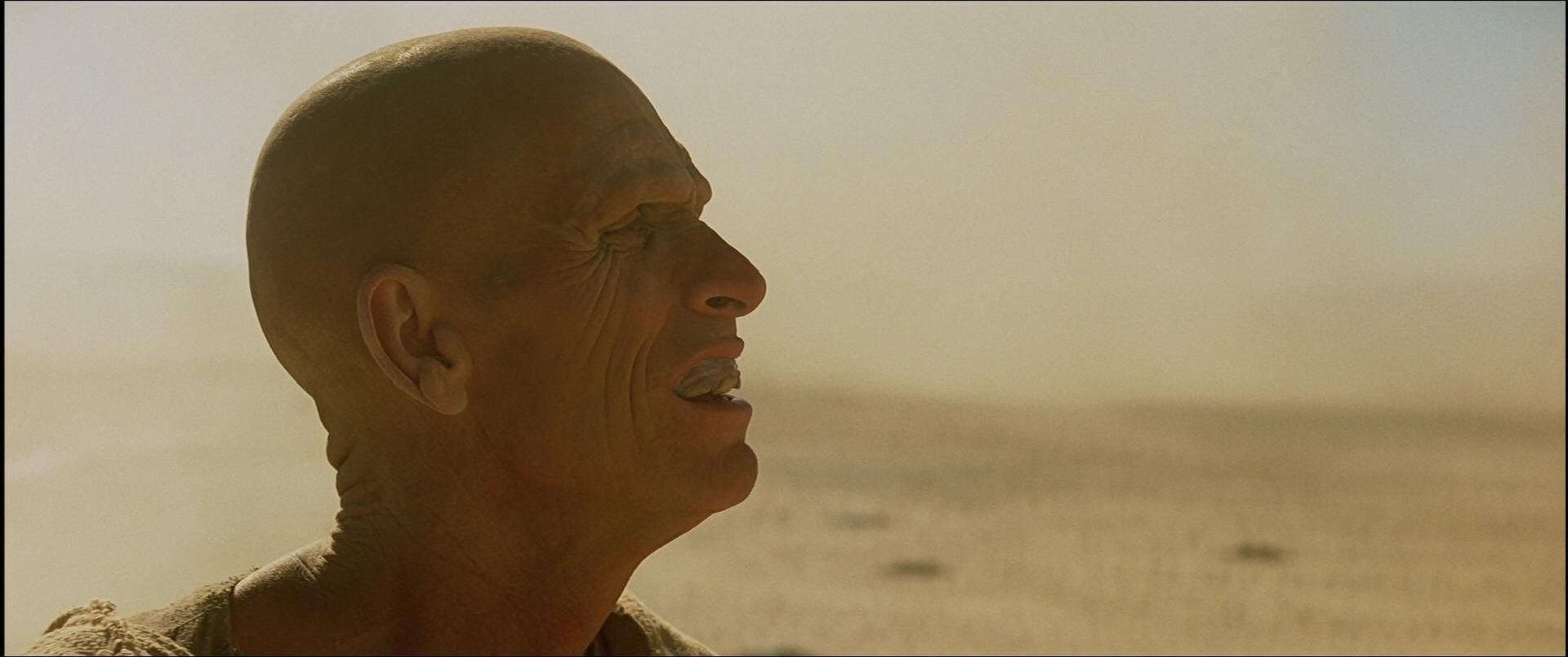
StarTrek.com
In addition to our beloved Original Series cast members, there were other familiar faces in the cast that popped up more than once in the Star Trek franchise, including two Klingon Chancellors.
David Warner, who played St. John Talbot in The Final Frontier, would play both Chancellor Gorkon in Star Trek VI: The Undiscovered Country, and Gul Madred, the Cardassian who tortured Picard in TNG’s “Chain of Command.”
Charles Cooper, Klingon General Korrd, would go on to play Chancellor K’mpec in two episodes of Star Trek: The Next Generation — in the same cloak he’d worn in the movie. Another memorable TNG guest star, George Murdock, aka “God,” would play Admiral Hanson in the TNG two-parter (and season 3 cliffhanger) “Best of Both Worlds.”
Rex Holman (J’onn, the very first person you see in the movie), has some old school Trek cred: He played Morgan Earp in the Original Series third season episode “Spectre of the Gun.”
And there are more! Look up Todd Bryant and Spice Williams next time you’re on a Trek trivia mission.
The movie would’ve shown an addition to Mount Rushmore
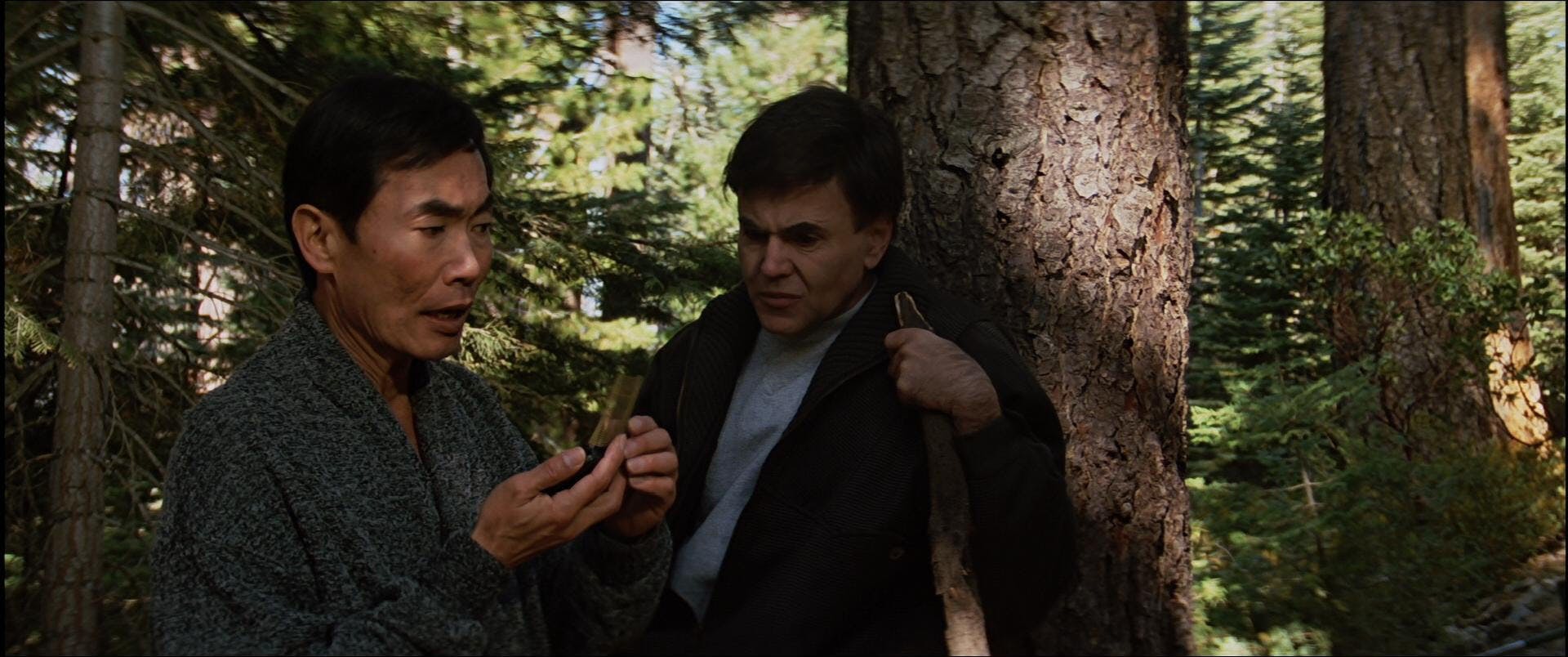
StarTrek.com
With the focus on the Kirk-Spock-McCoy trinity, Sulu and Chekov didn’t get a whole lot to do in this movie. (Walter Koenig even told the authors of The 50-Year Mission: The First 25 Years that he only worked on it for eight days.) They did have another scene together that was cut, which took place in front of Mount Rushmore.
“You’ve seen one national park, you’ve seen them all,” says Chekov, but in this case, he’s wrong. In the future — at least in the future of Star Trek V — there’s a fifth head there, and it belongs to a Black female president, named Sarah Susan Eckert in Dillard’s novelization.
That fan dance was more controversial than you think
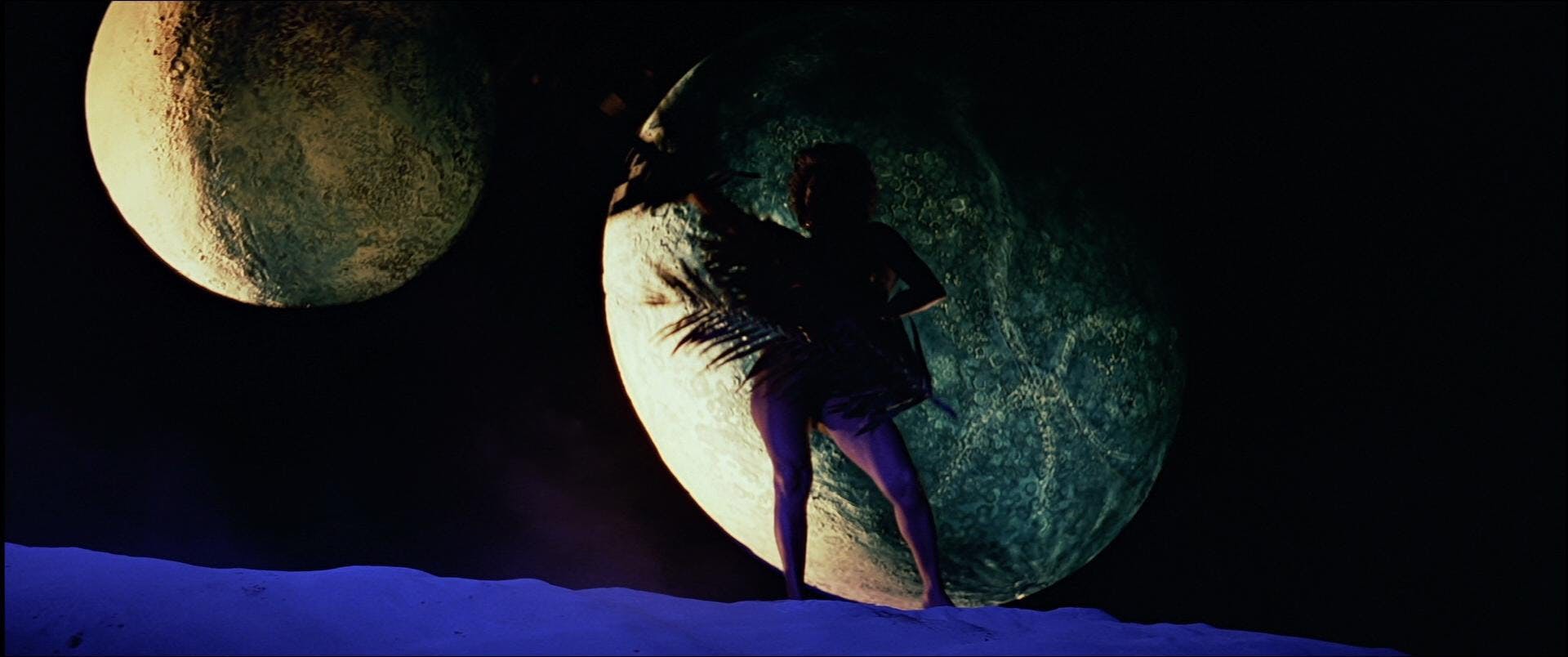
StarTrek.com
For better or for worse, there’s a strange scene in the movie where Uhura must do a sensual “fan dance” in order to distract Sybok’s soldiers. Screenwriter David Loughery suggested it as a joke and was shocked when they loved the idea. “Nichelle has great gams, so anybody would stop and take a look, and that’s all we needed,” said Shatner in the DVD extras.
Nichelle Nichols was happy to do it. She was an accomplished singer and dancer who had toured with Duke Ellington and Lionel Hampton,and was looking forward to having more of her singing in Star Trek. Shatner and Bennett told her that the final decision on what vocals would be used was Jerry Goldmsith’s, but they’d let her know what he decided, and then… they didn’t. She wrote in her book Beyond Uhura that she showed up for a looping session and Shatner, assuming she’d been filled in, said it was too bad “about the music,” and that he knew she “would have done just as good a job.” The song would be performed by a group called Hiroshima. Nichols was crushed, and ultimately disappointed by the scene in the final film.
For those wondering about Nichols fan dance costume, she revealed during a fan Q&A that “I was wearing… me. And, of course, I had a G-string on.”
The key to the film’s distinctive look: location, location, location
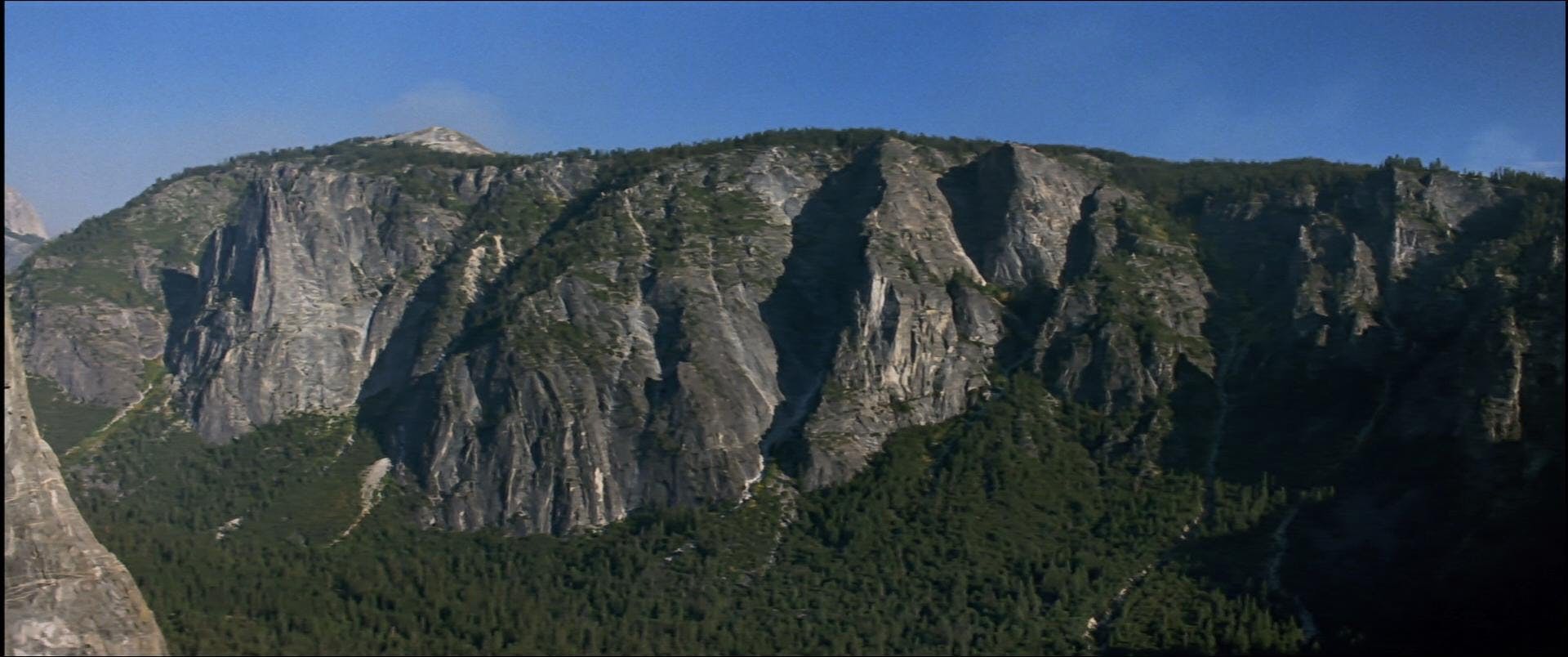
StarTrek.com
The locations were challenging, but worth the effort. The climbing scenes were done at Yosemite National Park. Shatner loved free climbing and was in his element, but the famous giant rock formation El Capitan presented a problem for the crew, who couldn’t get close enough to do closeups. A wall was built in a parking lot for those shots. But that free fall was really performed by stuntman Kenny Bates, earning him the credit for the highest descender fall in the United States at that time.
The Nimbus III scenes were filmed in Owens Dry Lake in the Mojave Desert. The location was also used in the movie Tremors, starring Kevin Bacon. Six degrees achieved!
As for Ska Ka Ree, that was filmed at the Trona Pinnacles in central California. This unique geological formation was a popular location, also seen in movies like Battlestar Galactica and the original Planet of the Apes, as well as the video for Rihanna’s “Sledgehammer,” released to promote the movie Star Trek Beyond.
The campfire scenes were the last ones filmed
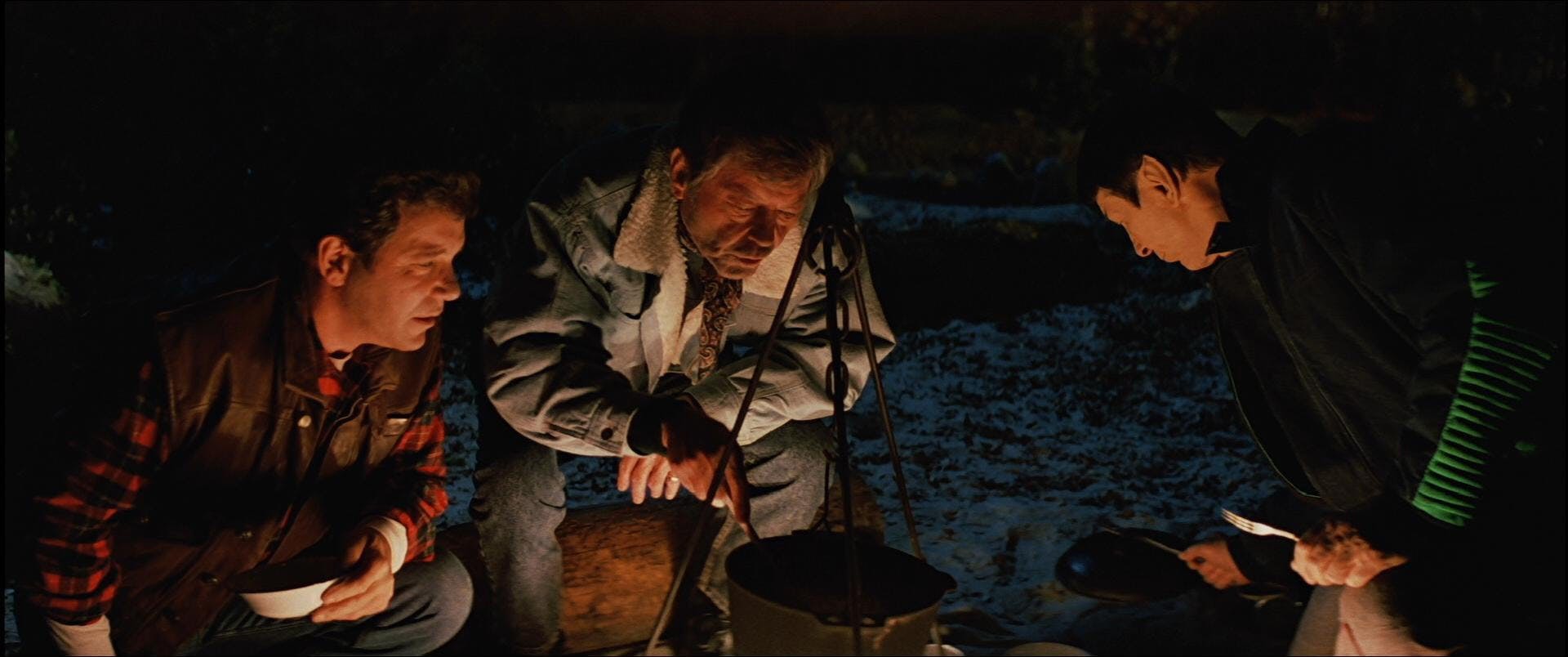
StarTrek.com
To make those scenes feel special, it was the final sequence on the schedule. With all of the dust-ridden deserts and giant cliffs already behind them, the last days of production were spent around the campfire, on a set on the Paramount lot. There wasn’t time to put tops on the trees, so Shatner had to keep the shots tighter than he would’ve liked, but he’s still happy with how everything turned out. They had a small celebration with champagne and cake after the last shot was done.
There’s a backstory to Spock’s “marsh melons” mistake

StarTrek.com
About those campfire scene marshmallows… they came from Kraft, as did Spock’s dispenser. A tie-in product was created so fans could have their very own marshmallow dispensers (via mail order; this was 1989). And yes, you can still find them on eBay.
But here’s the real question: Why does Spock mistakenly call them “marsh melons”? In J.M. Dillard’s novelization of the movie, McCoy knows that Spock is going to do extensive pre-camping research, so he pranks him by getting a computer tech to change “marshmallows” to “marsh melons” everywhere they’re referenced. That’s also why he gets such a kick out of watching Spock say it.
They made a few mistakes
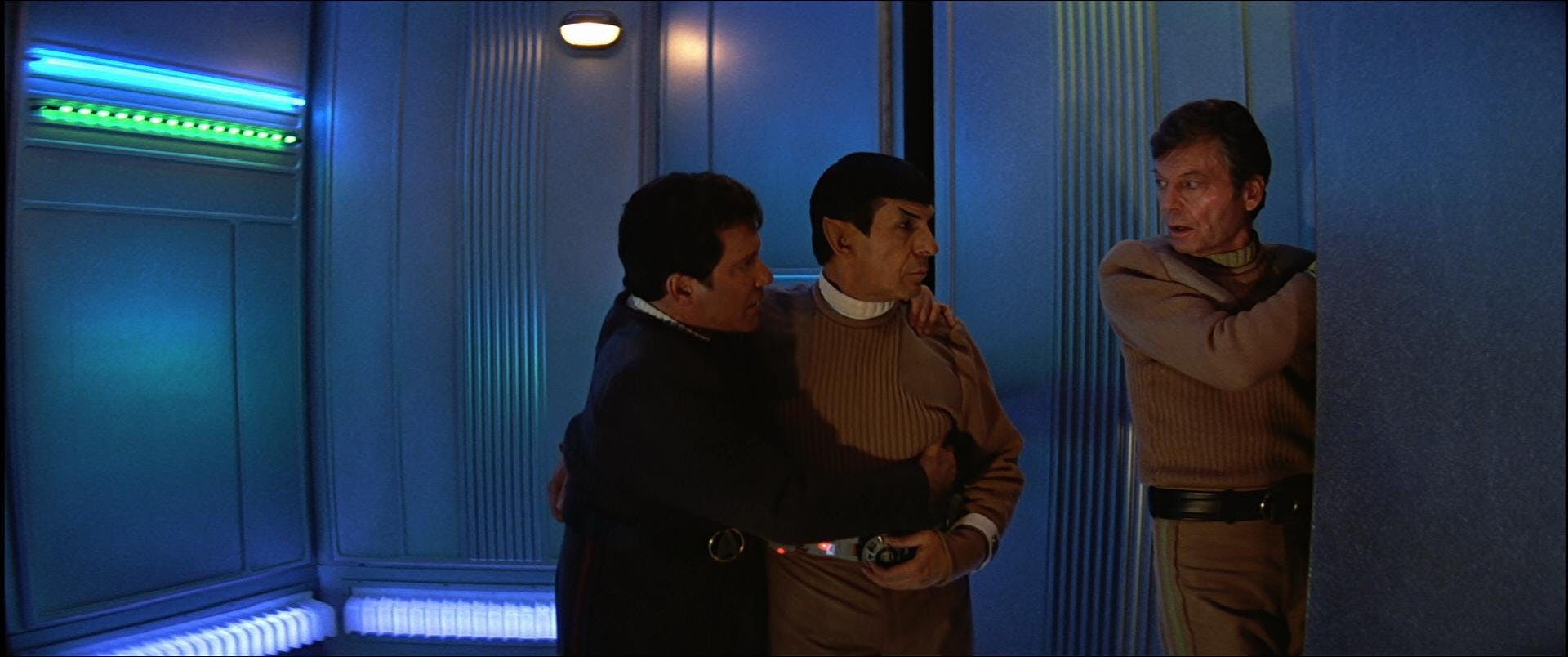
StarTrek.com
This wasn’t the first movie with an onscreen blunder, and it won’t be the last. There’s one right at the beginning, when Kirk falls off El Capitan and is rescued by Spock (in his awesome levitation boots) just before hitting the ground. When he starts his fall, he has a scruffy face you’d expect from someone on a camping vacation, but by the time he gets to the bottom, he’s clean-shaven. (Even in the future, that seems like an unlikely shaving method.)
Another one happens when Kirk, Spock, and McCoy are on the run from Sybok’s followers and (once again with help from Spock’s levitation books), they zoom up the turboshaft together. They pass deck 52 twice (oops), then go all the way to 78 when Star Trek lore tells us that the ship only has 23 decks. Not only that, the lowest number is traditionally the highest deck; the bridge atop the saucer section is deck 1. But like the shaving mistake, it doesn’t really affect the story… and wasn’t it worth it just to hear McCoy tell Kirk and Spock, ‘You two go ahead, I’ll wait for the next car”?
And finally…
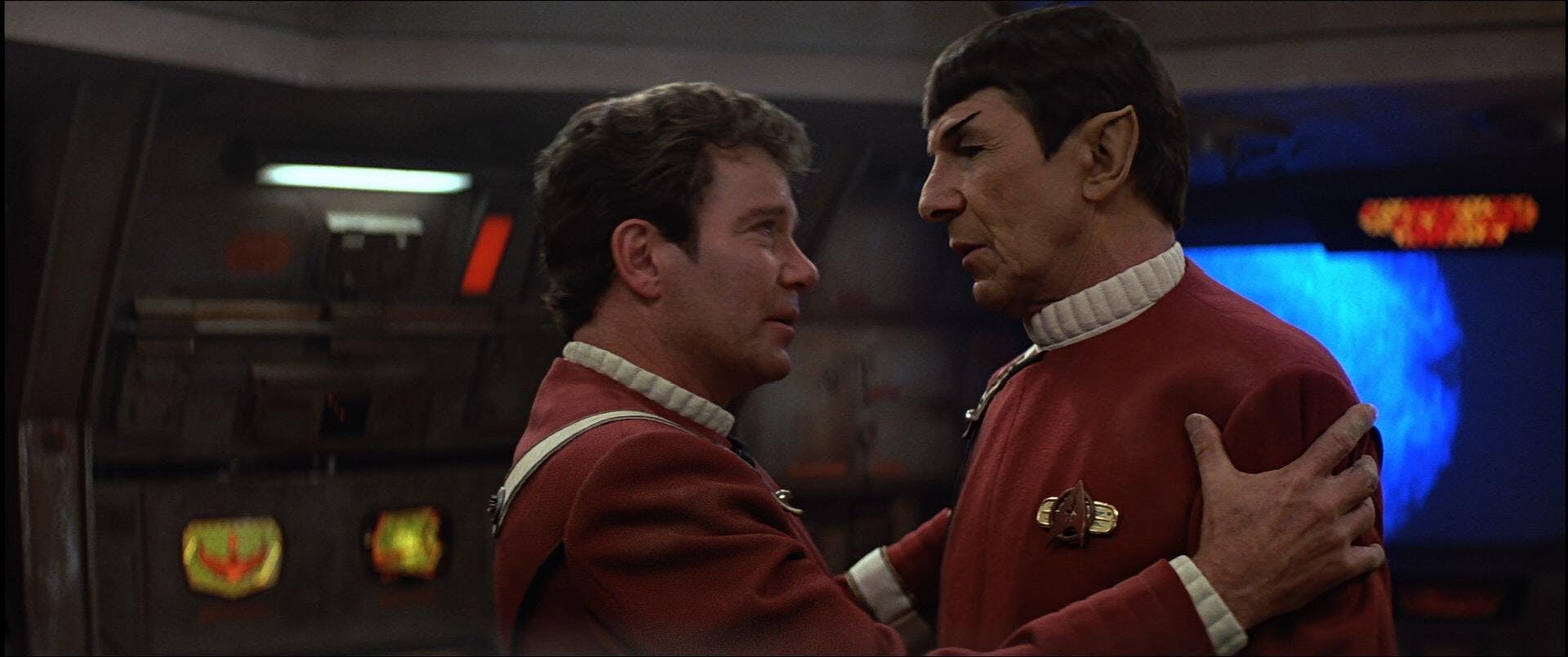
StarTrek.com
The movie suffered from budget cuts and numerous setbacks, but those who worked on it still had fun, with “exuberance” being the word most used to describe its enthusiastic director. Shatner took a lot of flak for the film, but he sums up his experience beautifully in the behind-the-scenes doc:
“I was in a joyful act of creation all the time, whether it was working or not… We just had a joyful time making a film.”
It shows.
(And for another fascinating look at Star Trek V, check out Trek V Wrapped Filming 30 Years Ago by Maria Jose and John Tenuto.)
Laurie Ulster (she/her) is a freelance writer and a TV producer who somehow survived her very confusing adolescence as the lone female Star Trek fan in middle school. She's a writer/editor and was the Supervising Producer on After Trek.

